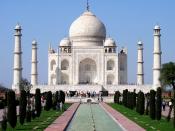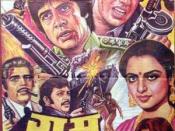It is very common these days to see an article in the paper or documentary on television about India on a weekly basis. Many people seem amazed at how a third world country like India can almost become an economic power or even have an economy to begin with. Many credit this to the greatness of the Free Market.
Today, India seems to have become the call center for the world. It seems that every time one makes a call to a major company for support, they are greeted by someone in India, particularly in Mumbai or Bangalore. However, even with this increase of dependency on workers in India, there are still major inequalities that are present in Indian society.
In his book The White Tiger (2008) by Aravind Adiga, we learn that although India may have gained independence in the 1940s from the British, many still live in servitude and poverty today.
We also learn about the conditions that many of India's working class live in, including the slums, the lack of running water, electricity and a working sewage system. We learn that the majority of people work servant jobs or jobs that in first world countries don't even exist. In the novel, Balram, the main character starts with the story of how his father who worked as a rickshaw puller and his whole family lived in poverty paying part of what they made through hard labour to a landlord who controlled what they did and the land they lived on. Many of the young boys are not educated or are enrolled in school for two or three years until they are forced into the workforce in order to make enough money to help support their families.
We learn of Balram's life story through seven letters that he...


